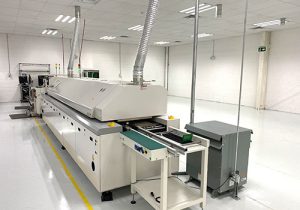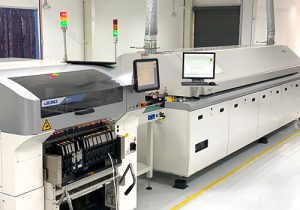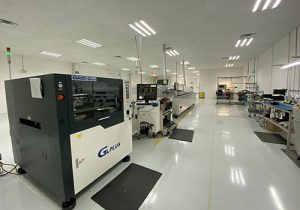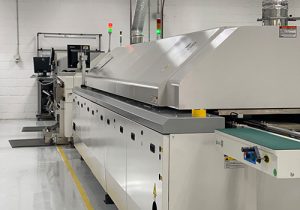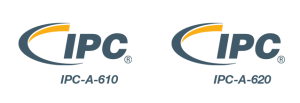PCBA FAQs
Common questions about printed circuit boardsCommon Questions About Printed Circuit Boards
Learn about printed circuit boards and how they work
Core Capabilities
Printed circuit board assemblies are the heart and soul of your human-machine interface. To help make the best design decisions early on, please review the frequently asked questions below.
If you need a custom design, our experienced team is happy to work with you.
1. What’s the appropriate name for a printed circuit board, PCB, PCA, or PCBA?

While PCB, PCA and PCBA are used interchangeably in the industry, here’s what they really mean:
- PCB – printed circuit board. It’s the “naked” board without the electronic components.
- PCA – printed circuit assembly. A populated board with all the components.
- PCBA – printed circuit board assembly. It’s the same thing as a PCA — a board with all the components included.
PCB is the most commonly used acronym when referring to the circuit board populated with all the components (which is the PCA or PCBA).
2. What exactly is a PCB?

A printed circuit board (PCB) is a board used to hold a chip or other electronic components. To accommodate various design needs, a PCB can be a single layer or consist of multiple layers. PCBs can also be single-sided or double-sided in design.
Several PCBs can be linked in a single device, using either flexible or rigid connectors.
3. Are PCBs flexible or rigid?
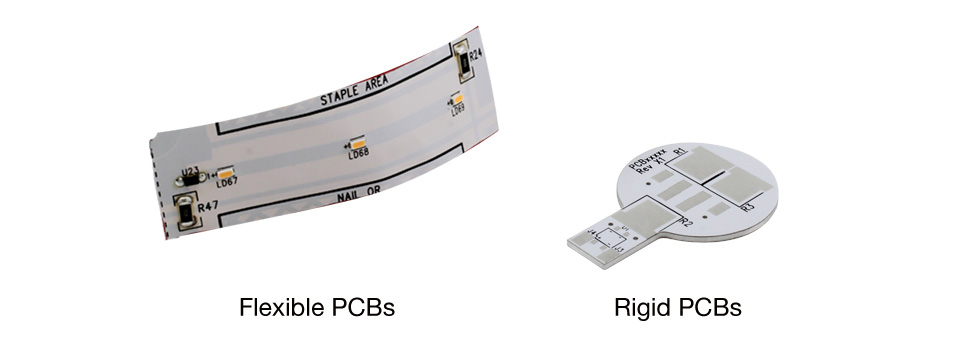
The answer is both. PCBs can be either flexible or rigid in design.
- Rigid PCBs are designed not to move, and typically cost less to manufacture than flexible PCBs.
- Flexible PCBs, or flex boards, are designed to move, twist and fold into the desired configuration, and can eliminate the need for connectors and other components, which can reduce overall production costs.
VCC can work with you to determine the ideal solution for your design — one that maximizes efficiencies.
4. What’s a motherboard?
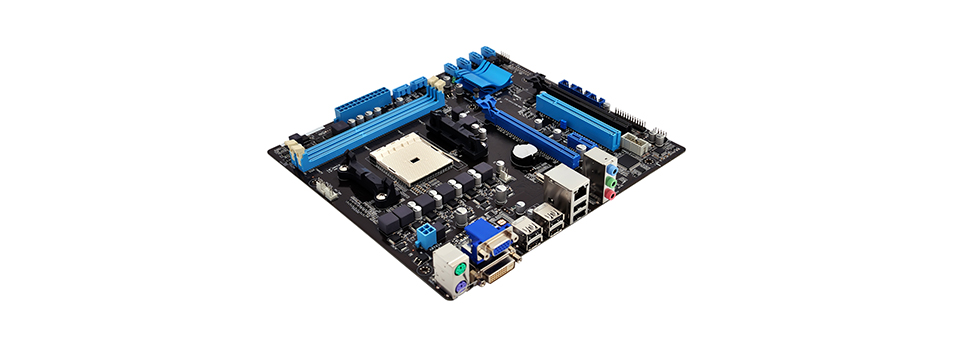
A motherboard is a printed circuit assembly (PCA) used exclusively in laptop or desktop computers.
While some may refer to a PCA as a motherboard, only those found in computers are motherboards. All other printed circuit assemblies are simply PCA or PCBA.
5. How does a printed circuit board assembly (PCB assembly) work?

The primary function of a PCB assembly is to integrate the electronic components of a device into a compact or defined space. Acting as the central hub of the electronic circuit of a device, the PCB provides insulation for all other electrical components, allowing them to be safely connected to a power source.
6. How are PCBs manufactured?

PCBs are typically made of multiple layers, including RF4 material substrate (such as fiberglass) for insulation, and copper to conduct electric current.
Creating a PCB is a multi-step process that includes:
#1 Designing the PCB – advanced software is used to determine the size, dimensions and number of layers needed for the PCB.
#2 Printing the PCB design – a specialized printer called a plotter printer is used to print the design, which is made up of multiple layers for the conductive and non-conductive areas. The print becomes the foundation of the substrate, which holds the components of the structure includes copper on both sides of the layer.
#3 Printing the copper for the interior layers – the design of the PCB is printed to a laminate that includes a film designed to react with ultraviolet light to properly align the board and the layout of the electrical components.
#4 Getting rid of the extra copper – because the design has been cooked and processed with ultraviolet lights, certain areas are hardened and the copper is bonded to the board. The next step is to use a chemical solution to remove the unnecessary copper from the board.
#5 Inspection and layer alignment – once the extra copper is removed, the design must be scrutinized to ensure all the layer and drill holes align properly. A machine drills a pin through the layers to keep them aligned. Then another machine tests the board for errors.
#6 Laminating the PCB layers – once the board passes inspection, an epoxy resin layer is applied to laminate the board. Another layer of substrate is applied, then layers of substrate resin and copper foil are applied and pressed together.
#7 Drilling holes – a computer-guided drill is used to drill holes through the substrate and inner panels at the appropriate places for the design. Once drilling is completed, any copper left over is removed.
#8 PCB plating – an additional copper layer is added to the board, followed by a thin tin guard to protect the outer layer of copper from being etched off. From there, the PCB receives a solder mask, silkscreen with critical information and placed with a solderable finish.
7. How much does it cost to get a custom PCB made?
Costs will vary depending on the size of the PCB you need. One board can run anywhere from a few cents to hundreds of dollars. Our team can help you identify the best solution for your needs and estimate design and production costs.
8. What’s included in the total cost of a PCB order?
Many design factors will help determine the total cost of a PCB. For example, the size, number of layers, type of board laminate used, and the total number of boards produced can greatly impact the overall cost.
9. What are the advantages of using a printed circuit board?
PCBs provide many benefits for designers and manufacturers of electronic devices. Printed circuit boards:
- Save space – They save space in the device by allowing all interconnections to take place on the board itself, without the need for current to be carried through multiple wires.
- Allow for easy installation and repair – troubleshooting and diagnostic testing are easy to conduct to address on the PCB, as all components are clearly labeled.
- Provide quick assembly – compared to conventional methods of connecting circuits, PCBs save time in assembly.
- Stay in place – because all the electronic components are soldered to a single board, they do not shift when moved.
- Efficient to mass produce – PCBs can be produced in large quantities at a more cost-effective rate than other power methods of component connectivity.
- Provide reliable power – because connections are made with the copper tracks on the board, they are less likely to come loose.
10. How many PCB layers can VCC create in one board?
Our experienced team can manufacture rigid single-layer boards as well as multi-layer designs up to four layers thick. However, your design may require less power. Speak with our engineers to help determine the ideal PCB for your needs.
11. Does VCC manufacture PCBs for through-hole or surface-mount (SMT) designs?

VCC can design and create both SMT and through-hole components for assembly. Design considerations:
- Through-hole components are typically larger, and can only be soldered to one side of the PCB.
- SMT components are smaller in size and ideal for tiny PCBs where space is limited.
Let our experienced team help you optimize the device of your next design.
12. Which PCB types does VCC offer?
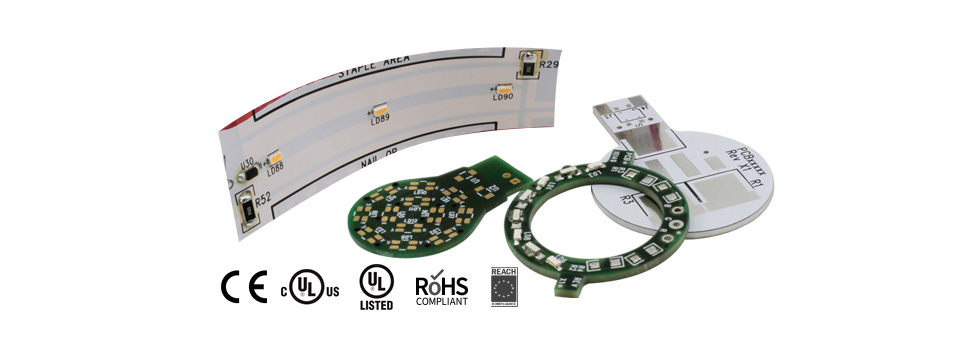
We can design and manufacture rigid and flexible PCBs up to four layers thick, ensuring conformance with UL, cUL, CE, RoHS, REACH and other regulatory requirements.
13. Which PCB services does VCC offer?
Our team offers a comprehensive suite of PCB services, including:
- Custom design services to optimize output and indication
- Rapid prototyping made even faster and cost-effective with our in-house 3D printer
- Sample runs so you can easily test concepts and tweak designs
- Mass production to efficiently accommodate large quantities
If you have additional questions, or are ready to discuss your next project, we’re here to help.
Contact us today for your PCB, PCA and PCBA needs.
14. Can VCC source my components and parts for SMT projects?
Yes. We can provide full turnkey PCBA production services, as well as only sourcing a portion of your materials, whichever works best for your current needs and supplier agreements.
15. How many SMT lines does VCC run?
16. What industry certifications does VCC have for PCBA manufacturing?
We adhere to the highest standards for quality and safety. VCC has the following certifications:
Learn more about VCC’s regulatory compliance here.
17. Will VCC sign a non-disclosure agreement for PCB manufacturing and assembly work?
Absolutely. It’s in our best interest to protect the interests and intellectual property of our customers. Unlike working with some overseas suppliers, you don’t have to worry about the security of your proprietary information.
18. Which files do you accept for PCBA production?
Our team can read Gerber files, as well as AutoCAD, Multisim, and ViewMate.
Have specific questions about submitting files? Contact your Regional Sales Manager or contact our support team.
19. What are your documentation and electronic data requirements for PCB assembly?
We need approved Gerber files, schematics, and a PCB layout to move forward with production.
20. What information is required for a turnkey PCB assembly order?
For turnkey projects, we’ll need the following:
- Bill of materials (BOM)
- Component placement list (CPL)
- All relevant CAD and ODB++ data (later in the process)
21. How large is your production facility?
22. Where should I send my files to get a quote or place an order for a PCBA?
Your Regional Sales Manager can assist you with obtaining a quote or placing an order. Here’s a list of our Regional Sales Managers and their contact information:
Mario Rossetti
West Coast Regional Manager
Melissa Canup
East Coast Regional Manager
Victoria Winstead
Central Regional Manager
23. Are you UL / Underwriters Laboratory approved?
VCC pursues all applicable UL certifications for our products, and we offer several products certified with UL and CSA, including OEM lamps.
Underwriters Laboratories (UL) grants multiple certifications, including:
- UL Listed or UL Listed to Canadian safety standards
- VCC is certified for PCBA by UL file E520330
24. Which CAM (computer-aided manufacturing) software do you use?
VCC uses CAM350 for manufacturing our PCBAs.
25. What is a PCB assembly?
A PCB assembly is the complete printed circuit board (PCB) with all of the appropriate electronic components. The assembly process is adding and soldering the electronics to the PCB, which requires multiple steps. Learn more about VCC’s PCBA process here.
26. Do you offer RoHS-compliant assemblies?
Yes, VCC does offer assemblies that comply with the European Union’s Restriction of Hazardous Substances (RoHS) Directive.
We also meet several other regulatory standards. See the full list here.
27. Do you offer testing and inspection services?
Yes, VCC offers a comprehensive list of testing and inspection services for both SMT and through-hole assemblies.
Learn more about our facility and specifications here.
28. What are your PCB assembly standards?
VCC has obtained the following IPC electronics industry standards for PCB assembly:
IPC-610 – standard for PCB production
IPC-620 – practices and requirements for cables, wire, and harness assembly manufacturing
29. Can you ship to my contract manufacturer for the final build?
Yes, we can ship your assemblies for final production. We can also offer turnkey, box build, and labor-only services.
30. Do you do consignment or full turnkey PCB assembly services?
VCC offers full turnkey, consignment, or labor-only services to meet your needs and specifications.
31. Where do you manufacture your products?
Our PCB assemblies and other products are manufactured just across the border in Tijuana, Mexico. By keeping production nearshore, we deliver a range of cost and time-saving benefits to our customers, including:
- Cost savings
- Faster delivery
- Tariff-free transactions
- Reduced supply chain risk
- Responsive customer service
We’ll ship your products FCA from our headquarters in San Diego, so you won’t have to worry about costs associated with importing. Learn more about how nearshore manufacturing can streamline your PCBA production here.
If you have additional questions or are ready to discuss your next project, we’re here to help.
Contact us today for your PCB, PCA, and PCBA needs.
How to Choose a PCB Assembly Company
PCBA
Design Guide
Are you ready for next level illuminated components?
Start a conversation with one of our technical engineers today Contact UsPanel Mount Indicator
LED Watertight PMI Build Your Own Indicator Neon Incandescent More
Circuit Board Indicators
LEDs
Latest Products
Check all the Latest Products
Custom Wire Harness
Custom Solutions
Custom Design Capabilities
Technical Resources
Product VideosBrochuresCustom SolutionsNewsCase StudiesFAQsGlossaryVideo Webinar
Purchasing
Product
Videos
Learn more about our products
The Latest
Contact
Contact Us
Call Us 1.800.522.5546

